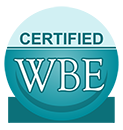Metallography in Green Bay
Microstructural quantification is performed on a prepared, two-dimensional plane through the three-dimensional part or component. Measurements may involve simple metrology techniques, e.g., the measurement of the thickness of a surface coating, or the apparent diameter of a discrete second-phase particle, (for example, spheroidal graphite in ductile iron). The measurement may also require the application of stereology to assess matrix and second-phase structures. Contact our team today for more information about metallography in Green Bay.
Metallography Services in Green Bay
Stereology is the field of taking 0-, 1- or 2-dimensional measurements on the two-dimensional sectioning plane and estimating the amount, size, shape, or distribution of the microstructure in three dimensions. These measurements may be made using manual procedures with the aid of templates overlaying the microstructure, or with automated image analyzers. In all cases, adequate sampling must be made to obtain a proper statistical basis for the measurement. Efforts to eliminate bias are required.
Some of the most basic measurements include determination of the volume fraction of a phase or constituent, measurement of the grain size in polycrystalline metals and alloys, measurement of the size and size distribution of particles, assessment of the shape of particles, and spacing between particles.
Standards organizations, including ASTM International’s Committee E-4 on Metallography and some other national and international organizations, have developed standard test methods describing how to characterize microstructures quantitatively.
For example, the amount of a phase or constituent, that is, its volume fraction is defined in ASTM E 562; manual grain size measurements are described in ASTM E 112 (equiaxed grain structures with a single size distribution) and E 1182 (specimens with a bi-modal grain size distribution); while ASTM E 1382 describes how any grain size type or condition can be measured using image analysis methods. Characterization of nonmetallic inclusions using standard charts is described in ASTM E 45 (historically, E 45 covered only manual chart methods and an image analysis method for making such chart measurements as described in ASTM E 1122. The image analysis methods are currently being incorporated into E 45). A stereological method for characterizing discrete second-phase particles, such as nonmetallic inclusions, carbides, graphite, etc., is presented in ASTM E 1245.
TPS Can Help You With:
Detecting Existing Problems
Minimizing Risk of Potential Problems
Insurance Costs
Saving Time and Money
Providing a Safe Working Environment
TPS Consulting Engineers, Ltd.
PO Box 10793 (54307-0793)
3306 Commodity Lane
Green Bay, WI 54304
Phone: (920) 337-0500
Fax: (920) 337-0689



